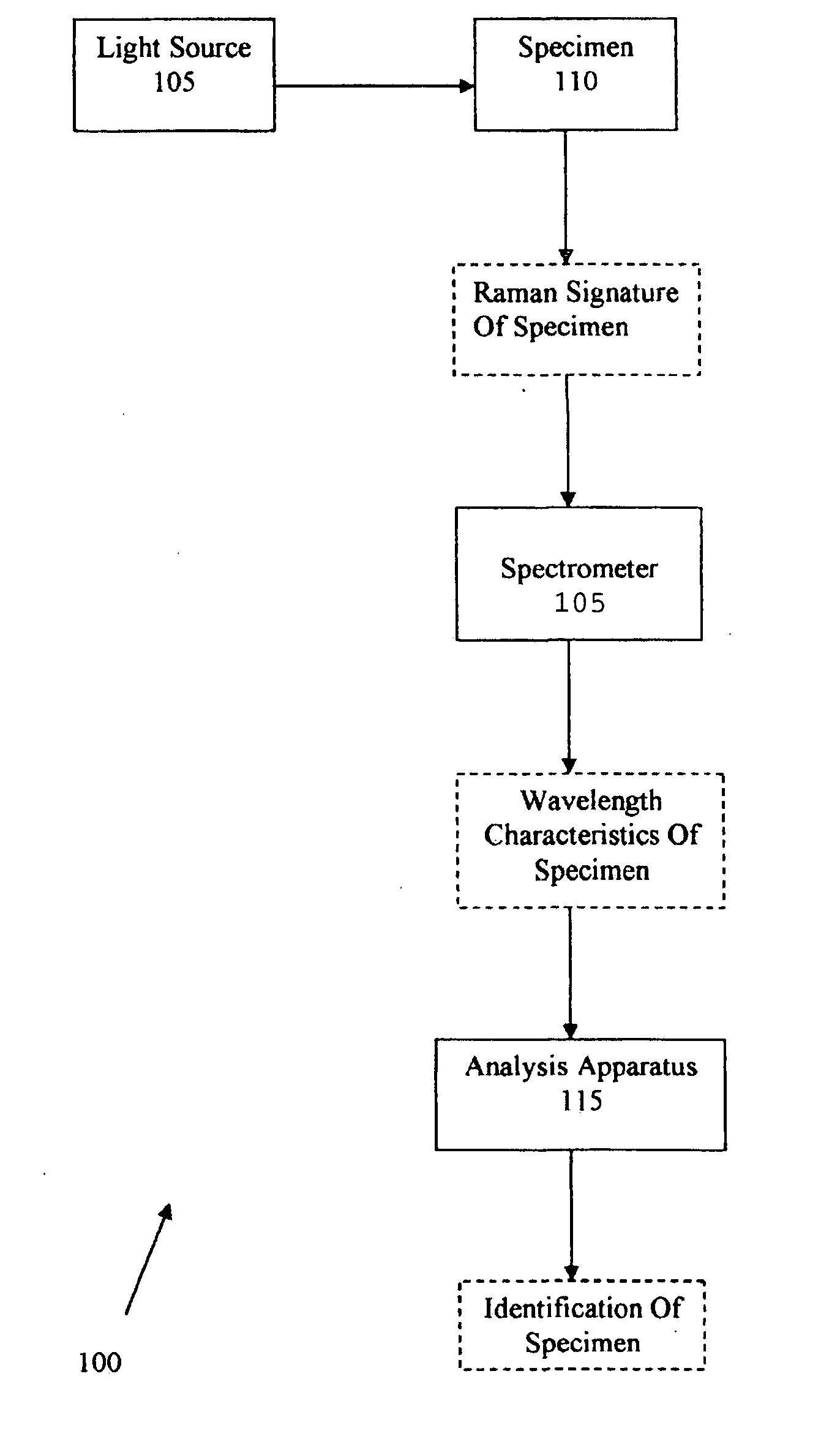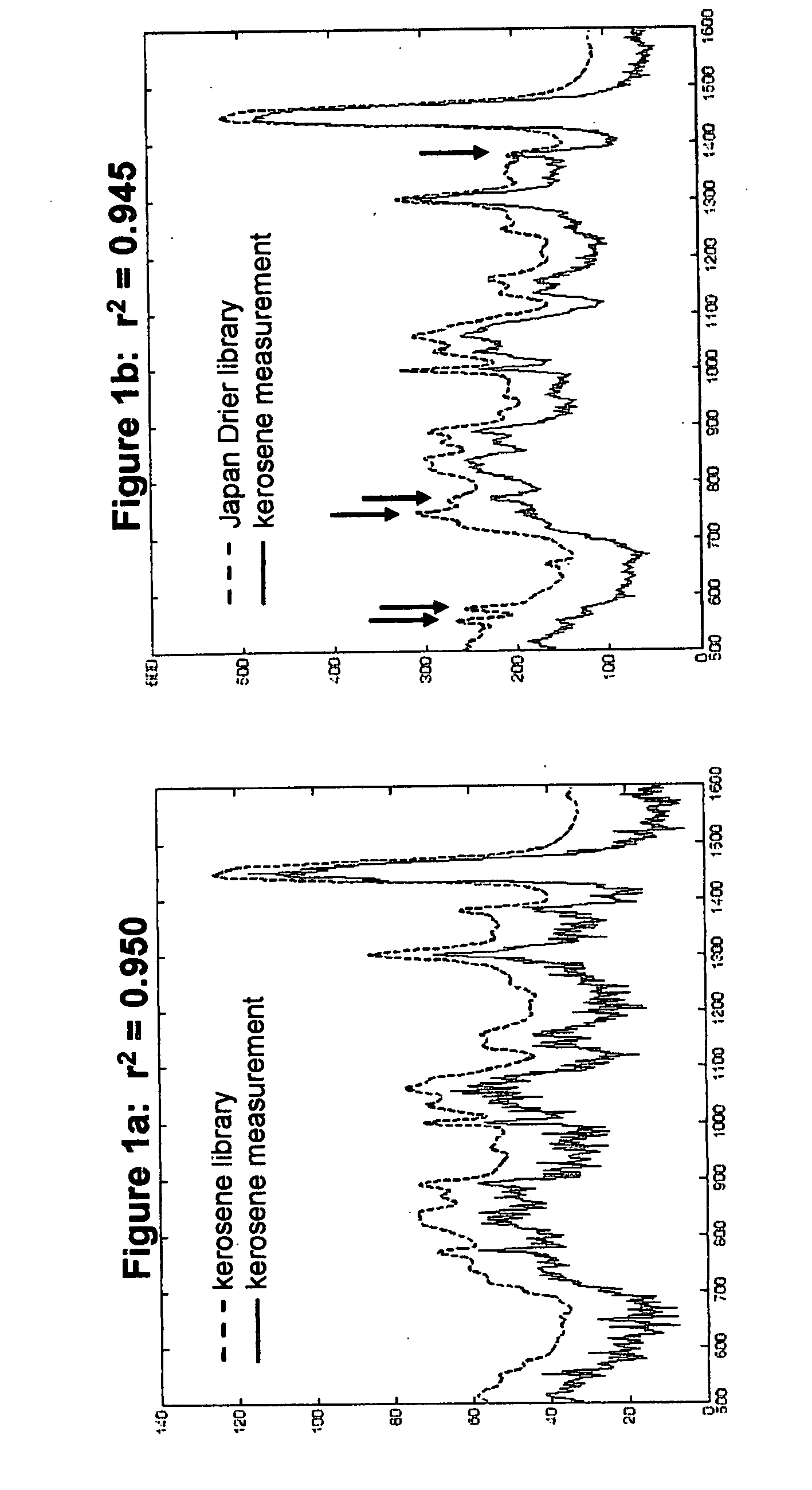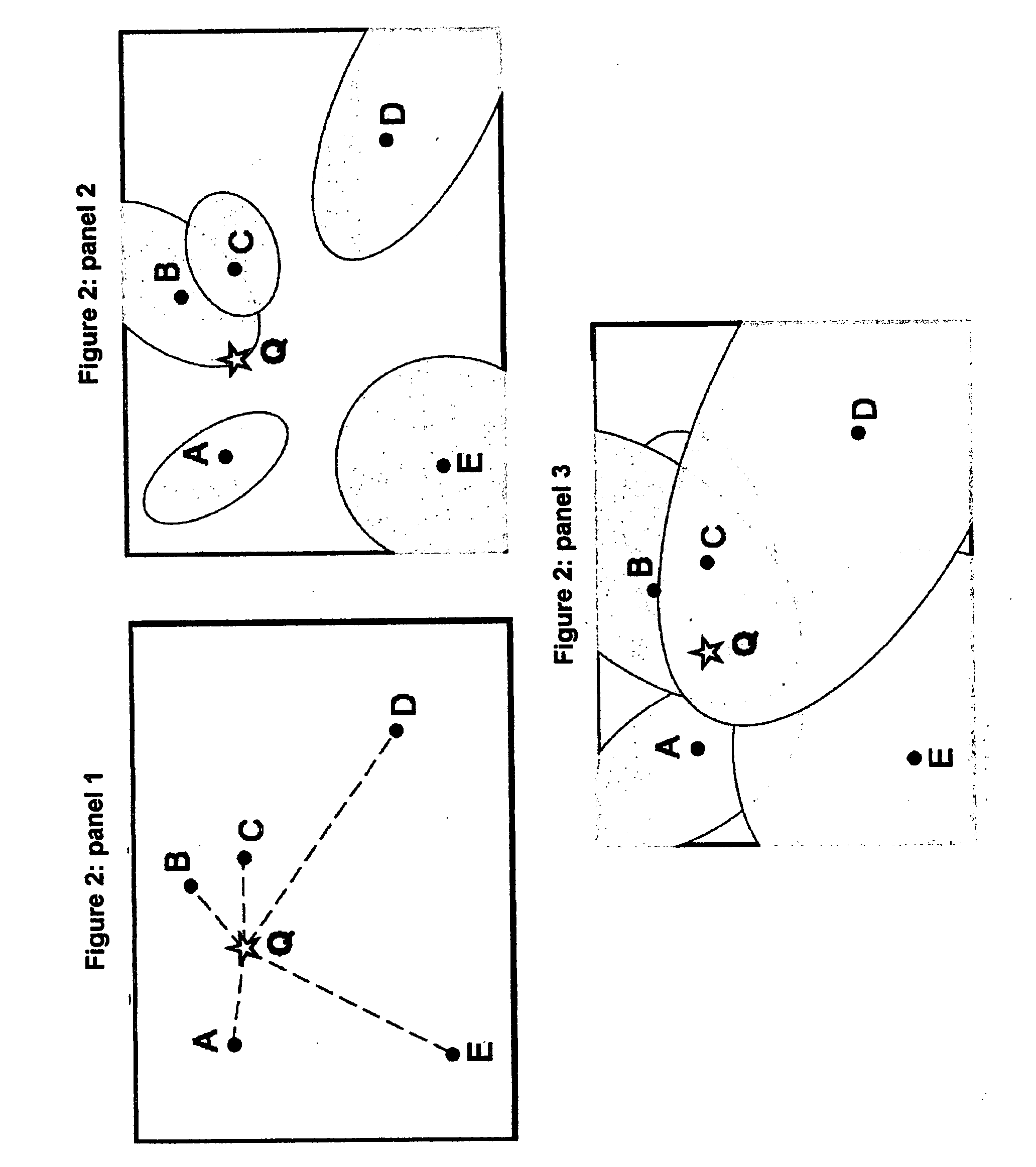Spectrum searching method that uses non-chemical qualities of the measurement
a search method and measurement technology, applied in the field of analytical chemistry, can solve the problems of inaccurate probabilities, inability to adapt to varying measurement conditions, and inability to accurately predict the effect of probability,
- Summary
- Abstract
- Description
- Claims
- Application Information
AI Technical Summary
Benefits of technology
Problems solved by technology
Method used
Image
Examples
Embodiment Construction
[0083] The critical question to be answered by the spectral library search appliance is: given the instrumental measurement of the specimen, and the conditions under which it was measured, (1) is it probable that any of the library records are a match?, and (2) what are the probabilities PA, PB . . . that the measured material is in fact pure A, B, etc.? These probabilities must be directly dependent on the measurement data, and its quality. Generally speaking, the measurement quality is a function of the accuracy of the measurement and its precision (or variability). It can often be assumed that, if the instrument has been designed appropriately and / or appropriate signal conditioning methods have been used, the measurement will be reasonably accurate, but inevitably suffers from imprecision to a degree dependent on the measurement conditions.
[0084] The inventiveness of the new approach discussed herein, relative to prior art, is most generally described as:
Si=f(ylib,i,ymeas,Σi,Σm...
PUM
 Login to View More
Login to View More Abstract
Description
Claims
Application Information
 Login to View More
Login to View More - R&D
- Intellectual Property
- Life Sciences
- Materials
- Tech Scout
- Unparalleled Data Quality
- Higher Quality Content
- 60% Fewer Hallucinations
Browse by: Latest US Patents, China's latest patents, Technical Efficacy Thesaurus, Application Domain, Technology Topic, Popular Technical Reports.
© 2025 PatSnap. All rights reserved.Legal|Privacy policy|Modern Slavery Act Transparency Statement|Sitemap|About US| Contact US: help@patsnap.com



